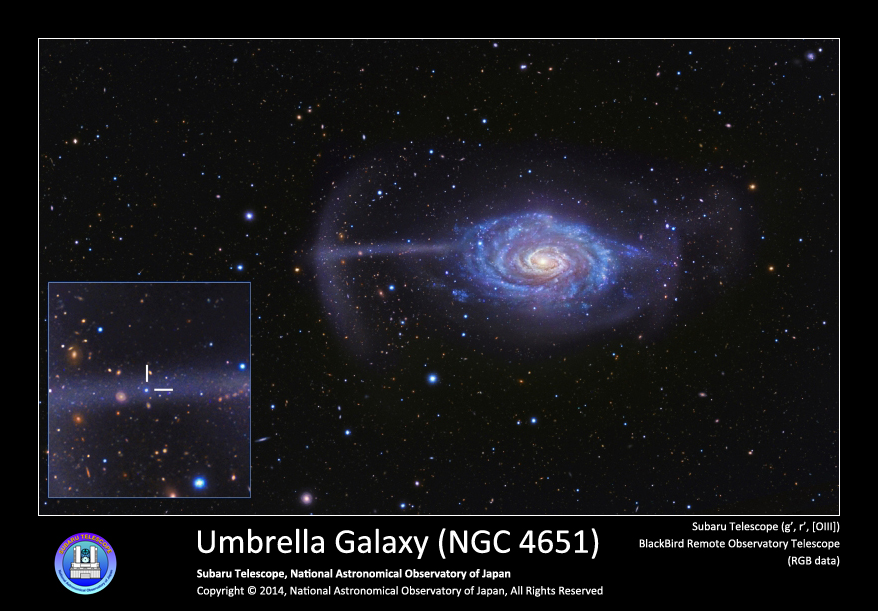Umbrella Galaxy NGC 4651
Astrophotography・

The spiral galaxy NGC 4651 is located approximately 62 million light-years away in the direction of the constellation Comae Berenices, and has spiral arms that closely resemble those of the Milky Way Galaxy. It is difficult to capture a galaxy whose brightness is about 11 magnitude with a small caliber telescope. But applying fine image processing to the image captured by a large caliber telescope, the slim arms, which extend outward to both ends of the galactic disk, and the faint circular arc, which extends beyond the arms, were found. Because the arc is shaped like an opened umbrella, this galaxy is called the “Umbrella Galaxy.”
The Remnant of a Small Galaxy Becomes a Big Umbrella
It is thought that a small satellite galaxy orbiting around the Umbrella Galaxy made this huge unfurled umbrella in space. When the satellite galaxy approached the primary galaxy, the satellite galaxy got sucked in by the primary galaxy's strong gravity. As the primary galaxy cannibalizes the satellite galaxy, it strips away the gas and stars, leaving a stream of stars around the primary galaxy. This mysterious structure seems to have been formed as a result of this process being repeated over and over. Therefore, the big umbrella is a remnant of the satellite galaxy.
The “Cosmic Food Chain,” in which large galaxies cannibalize small galaxies, is already widely known. But the remnants of the small galaxies, which will be key to understanding the process of the food chain, are very faint and difficult to observe. So, the shape of the Umbrella Galaxy captured by the Subaru Telescope’s Suprime-Cam could be the key to unlock the cosmic food chain.
Text by: Tomoko Ono (Public Relations Center, NAOJ)
Translation by: Hiroko Tsuzuki and Ramsey Lundock (Public Relations Center, NAOJ)
Image Data
| Object | NGC 4651 |
|---|---|
| Telescope | The Subaru Telescope |
| Instrument | Sprime-Cam |
| Credit | NAOJ and R. Jay GaBany |